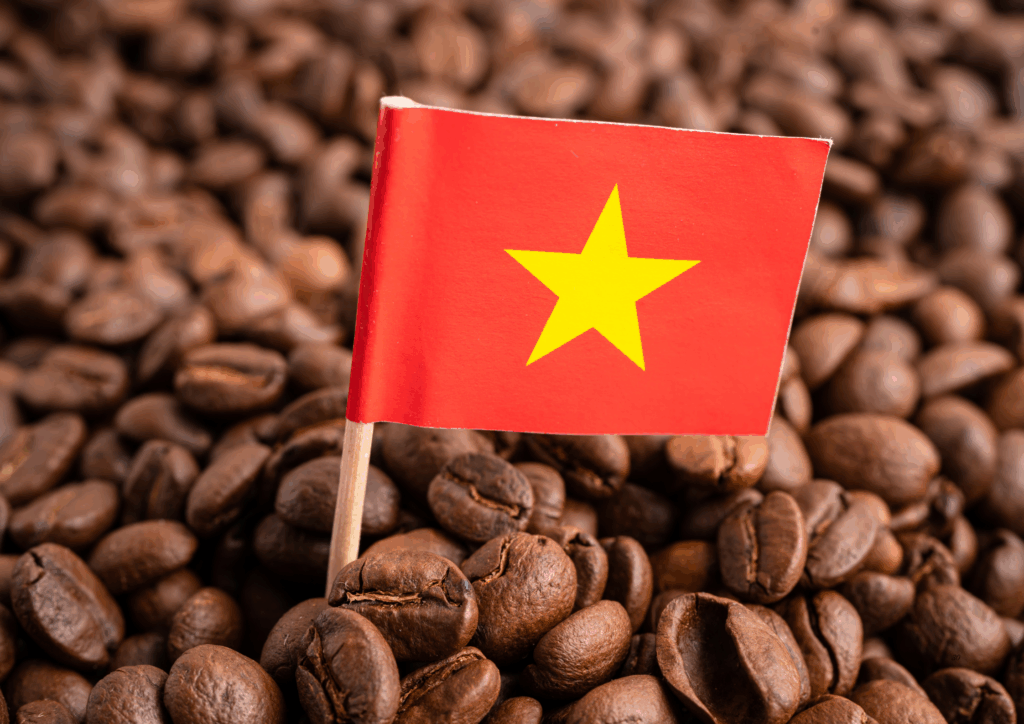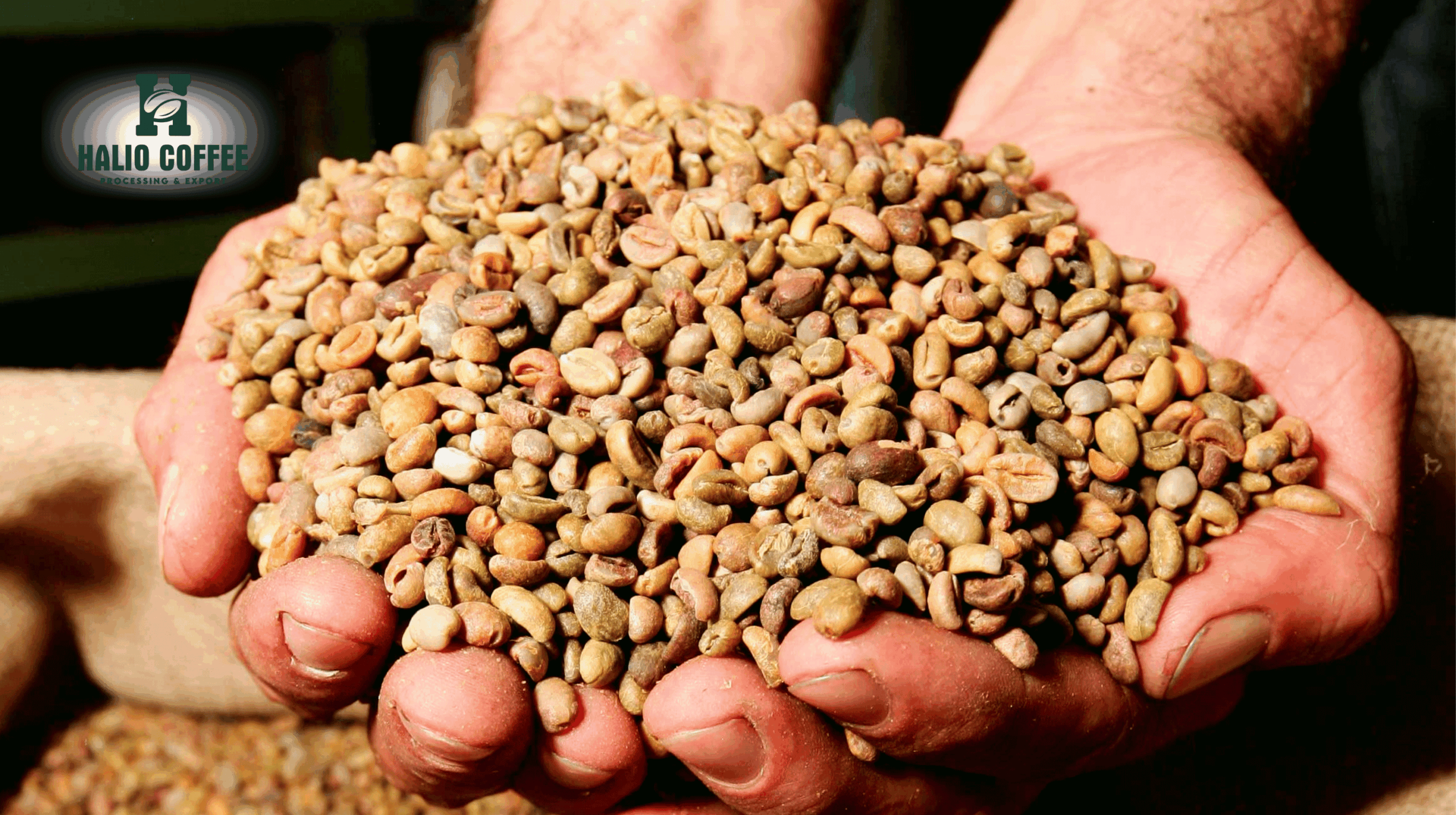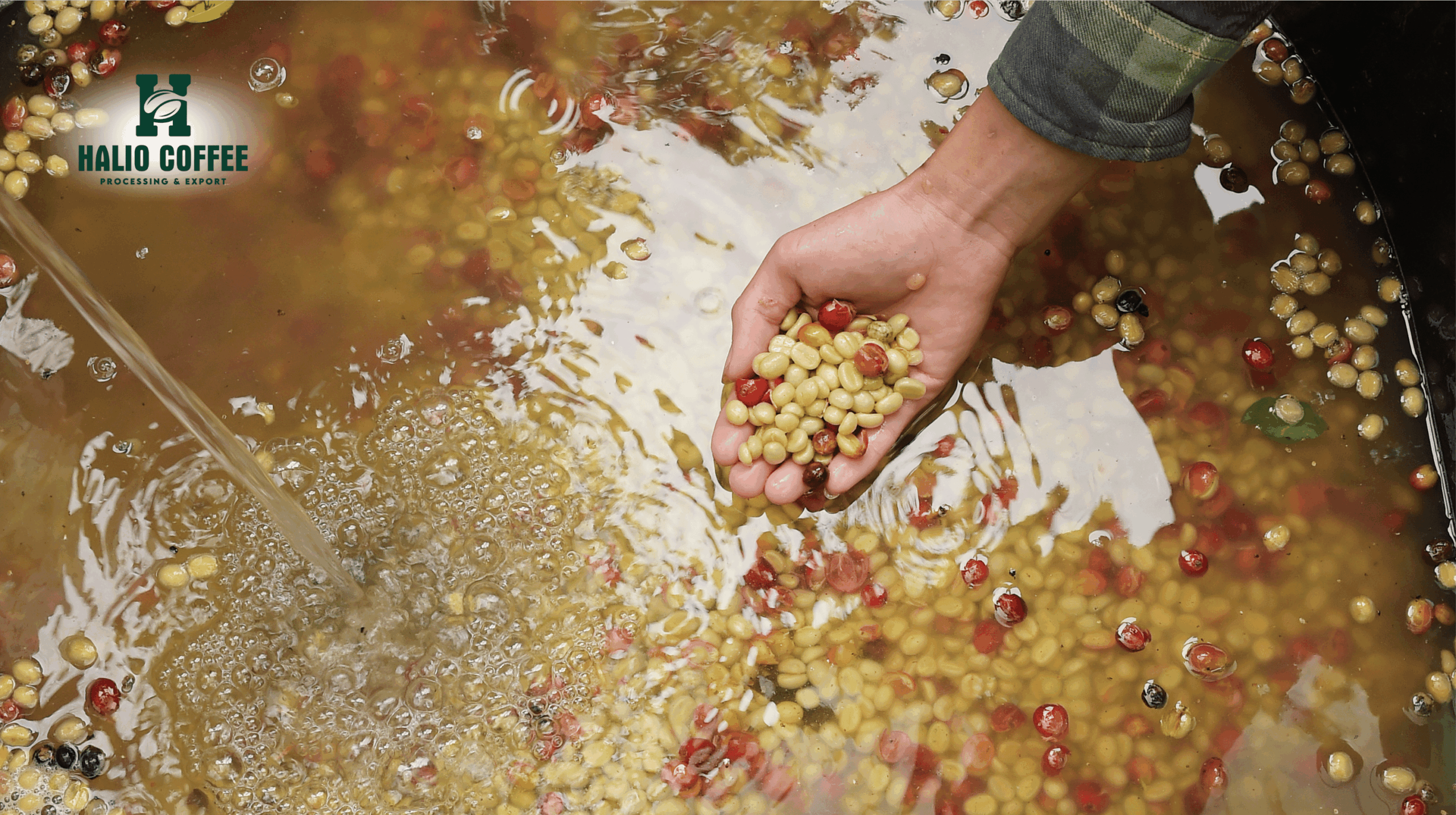Vietnam Green Coffee Beans Export: Market Insights and Supply Chain for Global Roasters
Vietnam has steadily grown into one of the most influential players in the global coffee trade, recognized as the world’s largest producer and exporter of Robusta coffee. For international roasters and distributors, understanding the dynamics of Vietnam green coffee beans export is critical for sourcing strategies, price forecasting, and product development.
In this article, we explore Vietnam’s position in the coffee supply chain, the quality dynamics of Vietnam green coffee beans, how producers are innovating in processing methods, and what this means for global roasters and distributors. This content is tailored for companies in coffee production, roasting, and distribution who need practical insights into the Vietnamese coffee industry.
Vietnam’s Role in the Global Coffee Industry
The Scale of Production
Vietnam accounts for roughly 15–20% of global coffee production, with annual exports consistently ranging between 25 to 30 million 60-kg bags. This makes the country the largest Robusta producer in the world and the second-largest coffee exporter overall, only behind Brazil.
While Arabica coffee is cultivated in smaller volumes in provinces like Lam Dong (notably Da Lat), more than 90% of Vietnam’s coffee cultivation is dedicated to Robusta, driven by its resilience, high yields, and suitability to Vietnam’s Central Highlands climate.
Export Footprint
The Vietnam green coffee beans export market spans more than 80 countries. Major destinations include:
- Europe: Germany, Italy, Spain, and Belgium are key importers for use in soluble coffee and espresso blends.
- Asia: Markets like Japan, Korea, and China are rising in importance, demanding both bulk Robusta and specialty-grade beans.
- United States: Traditionally a large importer of both Arabica and Robusta, with increasing demand for sustainable and traceable sourcing.
Vietnamese green beans are exported in bulk containers, but there is a rising trend of direct-to-roaster contracts, where importers secure beans with specific processing or certifications such as Rainforest Alliance, UTZ, or Organic.
See more: Bulk Vietnamese Robusta coffee suppliers
Vietnam Green Coffee Beans: Characteristics and Quality

Physical and Cup Profile
Vietnam green coffee beans are primarily Robusta, known for:
- High caffeine content: 2.2–2.7%, nearly double that of Arabica.
- Strong body: Adds crema and bitterness to espresso blends.
- Lower acidity: More suitable for instant coffee and dark roasts.
Depending on the region and processing, Vietnam’s Robusta can range from bold, earthy, and nutty flavors to more refined, clean, and chocolatey notes when processed under controlled fermentation methods.
Arabica from Vietnam, though smaller in volume, often presents bright acidity and floral-fruity notes, especially from high-altitude areas in Da Lat.
See more:
Processing Methods
Historically, Vietnam’s coffee has been associated with natural (dry) processing, aimed at maximizing volume and speed. However, the industry is shifting to include:
- Washed Robusta: Produces cleaner cups with reduced bitterness.
- Honey process: Adds sweetness and body.
- Experimental fermentations: Driven by specialty-oriented farmers to serve niche markets.
This diversification in processing allows exporters to target higher-value markets and meet the demand for traceable, differentiated products.
The Vietnam Green Coffee Beans Export Supply Chain
Farming Structure
Most coffee farms in Vietnam are smallholder farms, averaging 1–3 hectares. Despite this, Vietnam’s Central Highlands (Dak Lak, Gia Lai, Kon Tum, and Dak Nong) have well-established infrastructure for large-scale production and export.
Farmers are increasingly supported by cooperatives, exporters, and international NGOs in adopting sustainable farming practices, including:
- Reduced water usage through drip irrigation.
- Intercropping with pepper, avocado, or durian for income diversification.
- Use of organic fertilizers and composting.
Exporters and Trading Companies
The Vietnam green coffee beans export sector is dominated by both domestic trading companies and multinational firms:
- Domestic exporters: Vinh Hiep, Simexco Daklak, Intimex Group.
- Global players: Louis Dreyfus, Olam, Neumann Kaffee Gruppe.
These companies manage logistics from dry mills and warehouses in Buon Ma Thuot and Ho Chi Minh City to international ports like Cat Lai and Hai Phong.
Certifications and Quality Control
For roasters seeking consistent supply, certifications play a major role. Vietnam has seen rapid growth in:
- UTZ Certified / Rainforest Alliance
- 4C (Common Code for the Coffee Community)
- Organic certifications (USDA, EU Organic)
These programs ensure traceability, social responsibility, and environmental compliance, making Vietnam’s coffee more attractive to global buyers.
Price Dynamics and Market Volatility

Impact of Global Prices
Vietnamese coffee prices are heavily linked to the London Robusta futures market (ICE Europe). Price fluctuations in the futures market directly influence FOB export prices from Ho Chi Minh City and Haiphong.
For example:
- Bullish factors: Global supply shortages (as in Brazil’s frost years), speculative demand, or reduced certified stocks.
- Bearish factors: Oversupply, favorable weather in Brazil, or weak global demand.
Domestic Price Movements
Farm-gate prices in Dak Lak and Gia Lai typically range between 35,000 – 55,000 VND/kg, but can rise significantly during global supply shortages. These prices directly affect the margins of both farmers and exporters, making hedging strategies (via futures contracts) critical for trading companies.
Vietnam’s Competitive Edge in Coffee Export
Efficiency and Infrastructure
Vietnam has developed a highly efficient coffee logistics system, including:
- Modern dry mills with electronic sorting and grading.
- Proximity of farms to major highways and ports.
- Access to container shipping networks.
This infrastructure gives Vietnam a cost advantage over competitors, ensuring reliability for bulk buyers and roasters.
Government Support and Policy
Vietnamese coffee has benefited from:
- Government-backed replanting programs to replace aging trees.
- Export incentives for certified sustainable coffee.
- Investment in agricultural research for disease-resistant varieties.
Trends Shaping the Future of Vietnam Green Coffee Beans Export
Growing Demand for Sustainability
International roasters are increasingly requiring not just quality but sustainability guarantees. Exporters in Vietnam are responding by:
- Expanding certified farming areas.
- Training farmers in water conservation and soil management.
- Promoting carbon-neutral coffee initiatives.
Rise of Specialty Robusta
Traditionally, Robusta has been undervalued compared to Arabica. However, with shifting consumer preferences, Specialty Robusta coffee Vietnam is gaining recognition. Roasters are exploring Robusta with unique processing and cupping scores above 80 points, opening new opportunities for exporters.
Diversification into Value-Added Exports
Beyond raw beans, Vietnam is investing in:
- Roasted coffee exports for branding and higher margins.
- Instant coffee as Vietnam is one of the world’s largest soluble coffee producers.
- Ready-to-drink (RTD) products, leveraging Vietnam’s strong domestic coffee culture.
Challenges Facing Vietnam’s Coffee Export Sector
Climate Change and Yield Risks
Vietnam’s Central Highlands are experiencing more erratic rainfall, droughts, and rising temperatures. This poses risks to yields and long-term sustainability. Farmers and exporters must invest in climate-smart practices and drought-resistant varieties.
Quality Perception
Although volumes are high, some buyers still perceive Vietnam green coffee beans as lower quality compared to Brazilian or Colombian coffees. To counter this, exporters are investing in:
- Improved processing standards.
- Marketing campaigns to highlight traceability and unique Robusta qualities.
Competition in Global Markets
Brazil, Indonesia, and Uganda remain strong competitors in Robusta exports. For Vietnam, maintaining competitiveness means not just relying on cost efficiency but also on quality, sustainability, and innovation in processing.
Opportunities for International Roasters and Distributors
- Secure Supply Contracts: Vietnam offers a stable and large-scale supply of green beans, making it ideal for roasters needing consistent input for blends and instant coffee.
- Direct Trade Relationships: Increasing numbers of Vietnamese exporters are open to direct partnerships, enabling traceability and customized quality specifications.
- Exploring Specialty Robusta: For forward-thinking roasters, experimenting with Specialty Robusta coffee Vietnam could provide differentiation in crowded markets.
- Sustainability Branding: Partnering with certified exporters in Vietnam helps international companies align with ESG and consumer sustainability demands.
- Vietnam Natural Robusta Coffee: An Industry Guide for Producers, Roasters, and Distributors
- Specialty Coffee Beans Vietnam Supplier: Elevating Vietnamese Coffee to Global Standards
- Green Coffee Beans Price Vietnam: Market Trends, Pricing Factors & Forecast
- Unroasted Arabica Coffee Beans Vietnam: Exploring a Growing Niche in the Global Coffee Market
- Facing EU Hurdles, Indonesian Coffee Farmers Look to Pivot to North Africa







